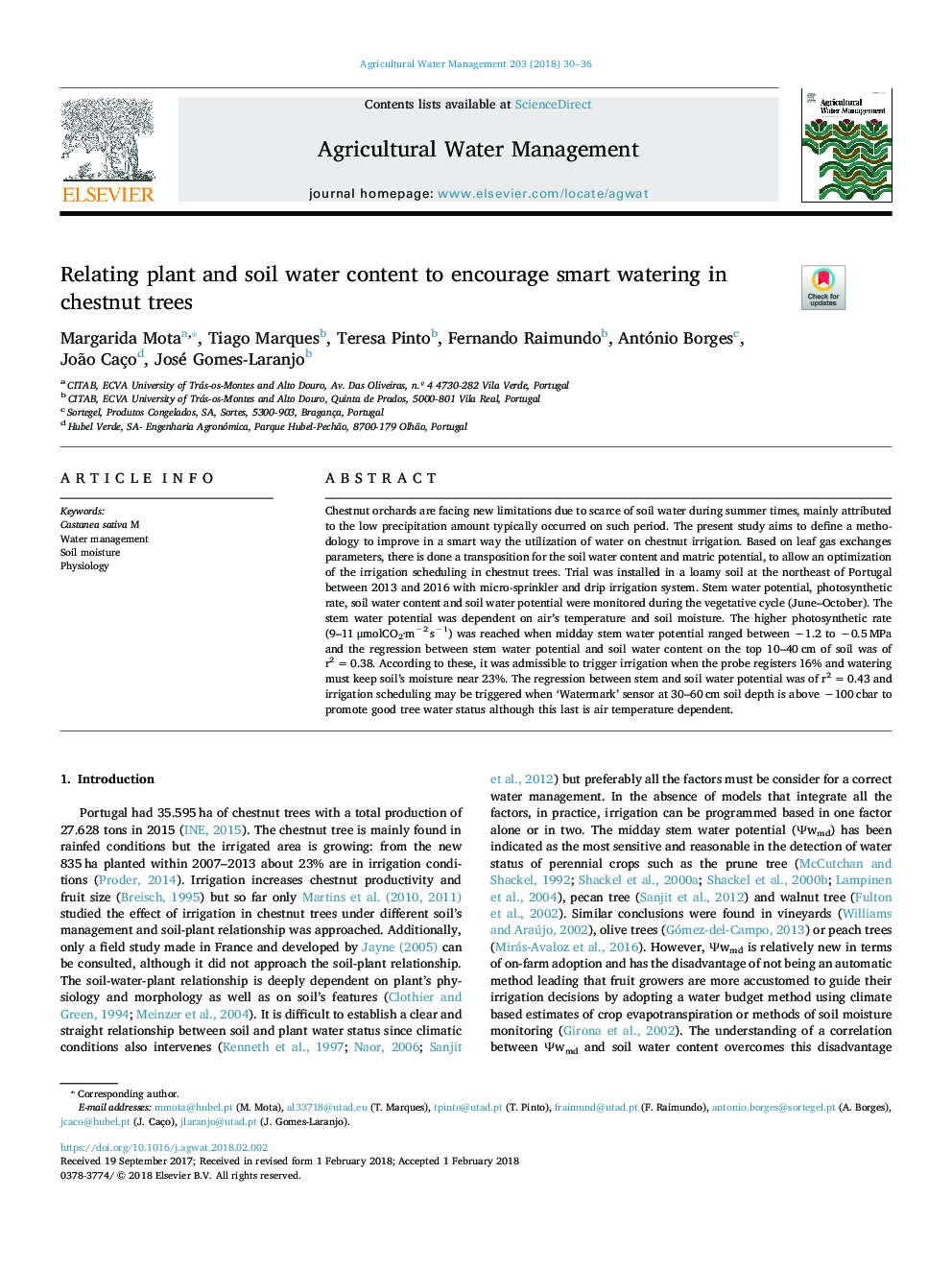| Article ID | Journal | Published Year | Pages | File Type |
|---|---|---|---|---|
| 8872920 | Agricultural Water Management | 2018 | 7 Pages |
Abstract
Chestnut orchards are facing new limitations due to scarce of soil water during summer times, mainly attributed to the low precipitation amount typically occurred on such period. The present study aims to define a methodology to improve in a smart way the utilization of water on chestnut irrigation. Based on leaf gas exchanges parameters, there is done a transposition for the soil water content and matric potential, to allow an optimization of the irrigation scheduling in chestnut trees. Trial was installed in a loamy soil at the northeast of Portugal between 2013 and 2016 with micro-sprinkler and drip irrigation system. Stem water potential, photosynthetic rate, soil water content and soil water potential were monitored during the vegetative cycle (June-October). The stem water potential was dependent on air's temperature and soil moisture. The higher photosynthetic rate (9-11â¯Î¼molCO2·mâ2â¯sâ1) was reached when midday stem water potential ranged between â1.2 to â0.5â¯MPa and the regression between stem water potential and soil water content on the top 10-40â¯cm of soil was of r2â¯=â¯0.38. According to these, it was admissible to trigger irrigation when the probe registers 16% and watering must keep soil's moisture near 23%. The regression between stem and soil water potential was of r2â¯=â¯0.43 and irrigation scheduling may be triggered when 'Watermark' sensor at 30-60â¯cm soil depth is above â100â¯cbar to promote good tree water status although this last is air temperature dependent.
Related Topics
Life Sciences
Agricultural and Biological Sciences
Agronomy and Crop Science
Authors
Margarida Mota, Tiago Marques, Teresa Pinto, Fernando Raimundo, António Borges, João Caço, José Gomes-Laranjo,
